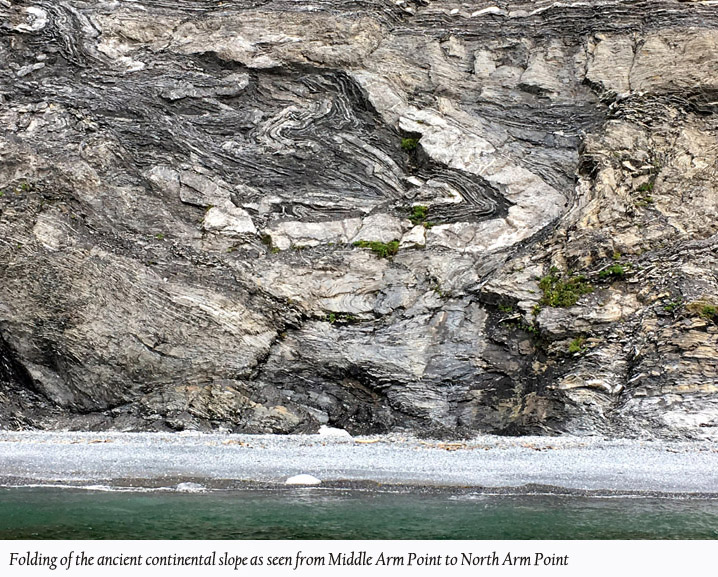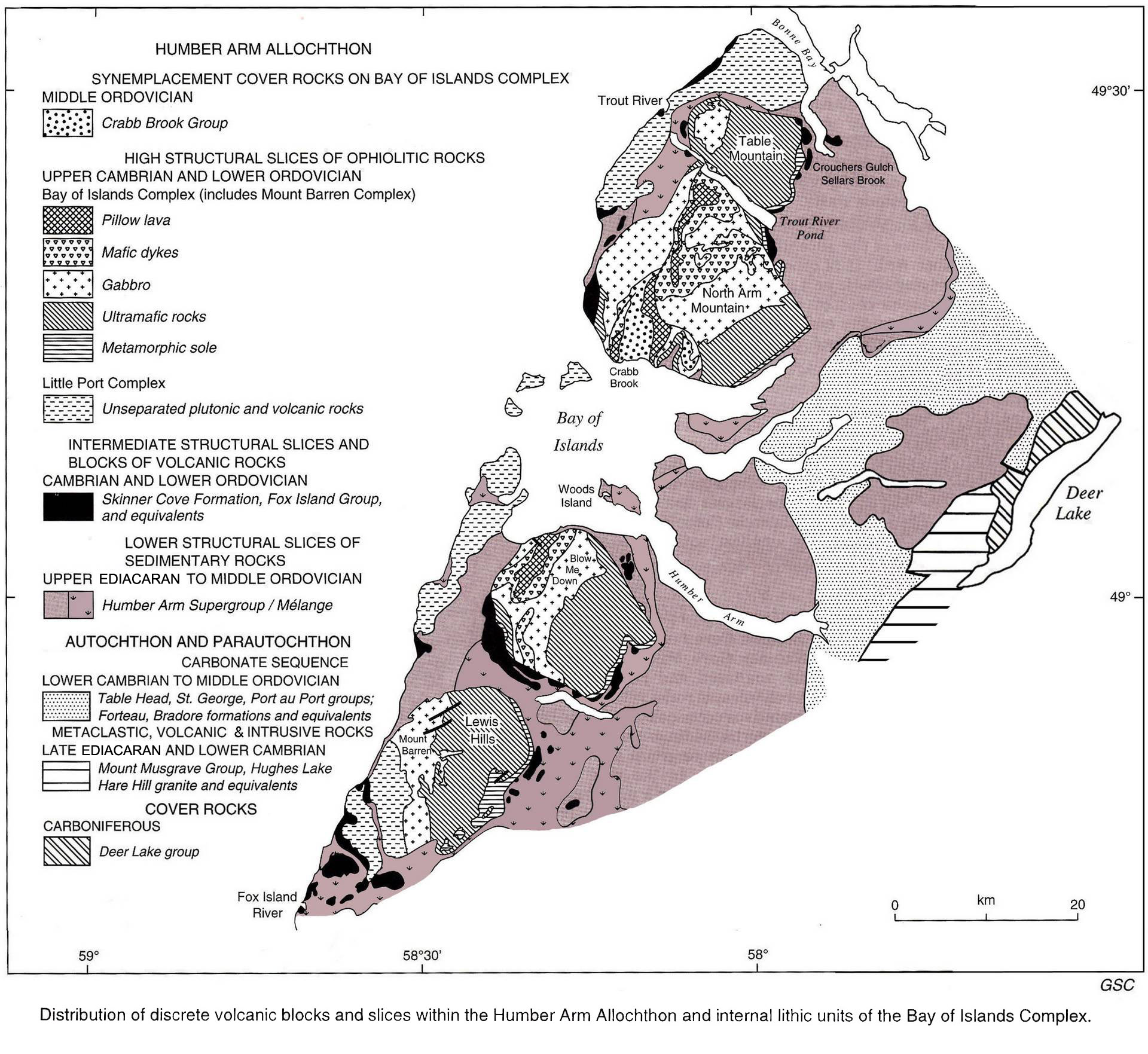Group B: Transported Continental Margin
GeoSite Group B is the Transported Continental Margin of North America. This is the most widespread Geosite Group within the planned Geopark, covering large areas that surround ophiolite massifs of the Bay of Islands Igneous Complex, as well as areas immediately west and north of Corner Brook. Individual geosites of this type are well-defined in Gros Morne National Park, most notably in the Green Point – Cow Head area, which includes the international stratotype for the Cambrian-Ordovician boundary. The shores of the Bay of Islands are proposed as the most likely concentrations of individual geosites in this category.
Rock types are late Precambrian to middle Ordovician and of sedimentary and volcanic origin, with the former dominant. The sedimentary rocks are extremely diverse, including intermediate-depth and deep-water carbonates, carbonate turbidites and spectacular sedimentary breccias developed on the ancient continental slope. Clastic rocks are equally diverse, ranging from black shales and radiolarian cherts to channel conglomerates that contain clasts of Precambrian basement and shallow-water assemblages akin to GeoSite Group A. Minor mafic volcanic rocks also exist. From a stratigraphic perspective, these rocks preserve a record of the outer shelf region that can be correlated with that of the continental shelf in GeoSite Group A. In both cases, the youngest sedimentary rocks are deep-water clastic sequences that contain ophiolitic detritus.
Site Group B records the development of the outer continental shelf, and allows the reconstruction of its anatomy and sedimentology. As in the case of Site Group A, variations in rock assemblages within this sequence record changes in global sea level and climates. The uppermost part of the sequence records the drowning of the outer continental shelf in deep water as it foundered, due to loading by approaching thrust sheets, including ophiolites. This transition occurs earlier than is seen in the shallow-water realm, and its progress can be traced progressively. The complex structure of the rocks in Site Group B records the events associated with the attempted subduction of North America beneath island arcs developed in the Iapetus Ocean. Thrust faults are common, and large-scale fold structures are defined.


